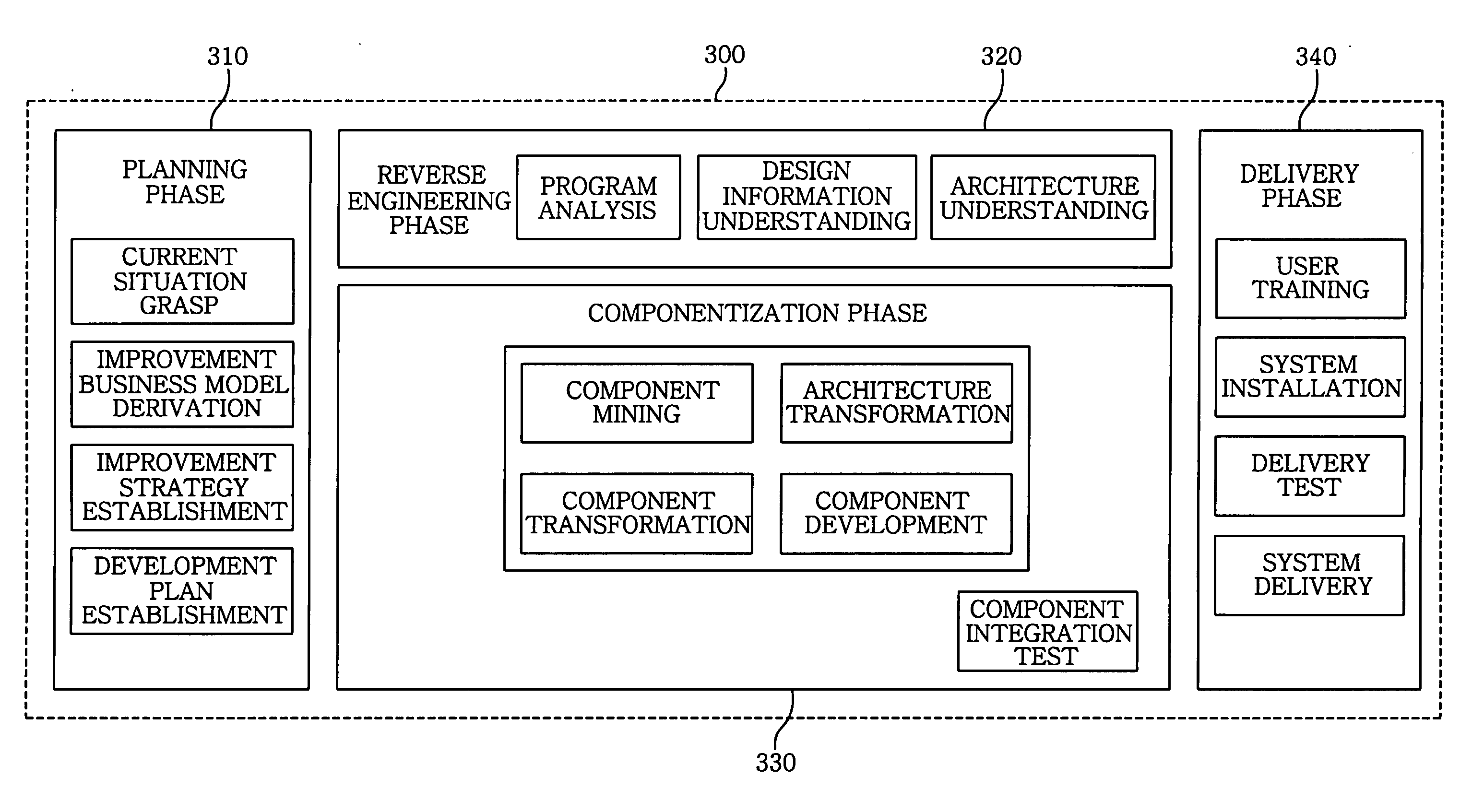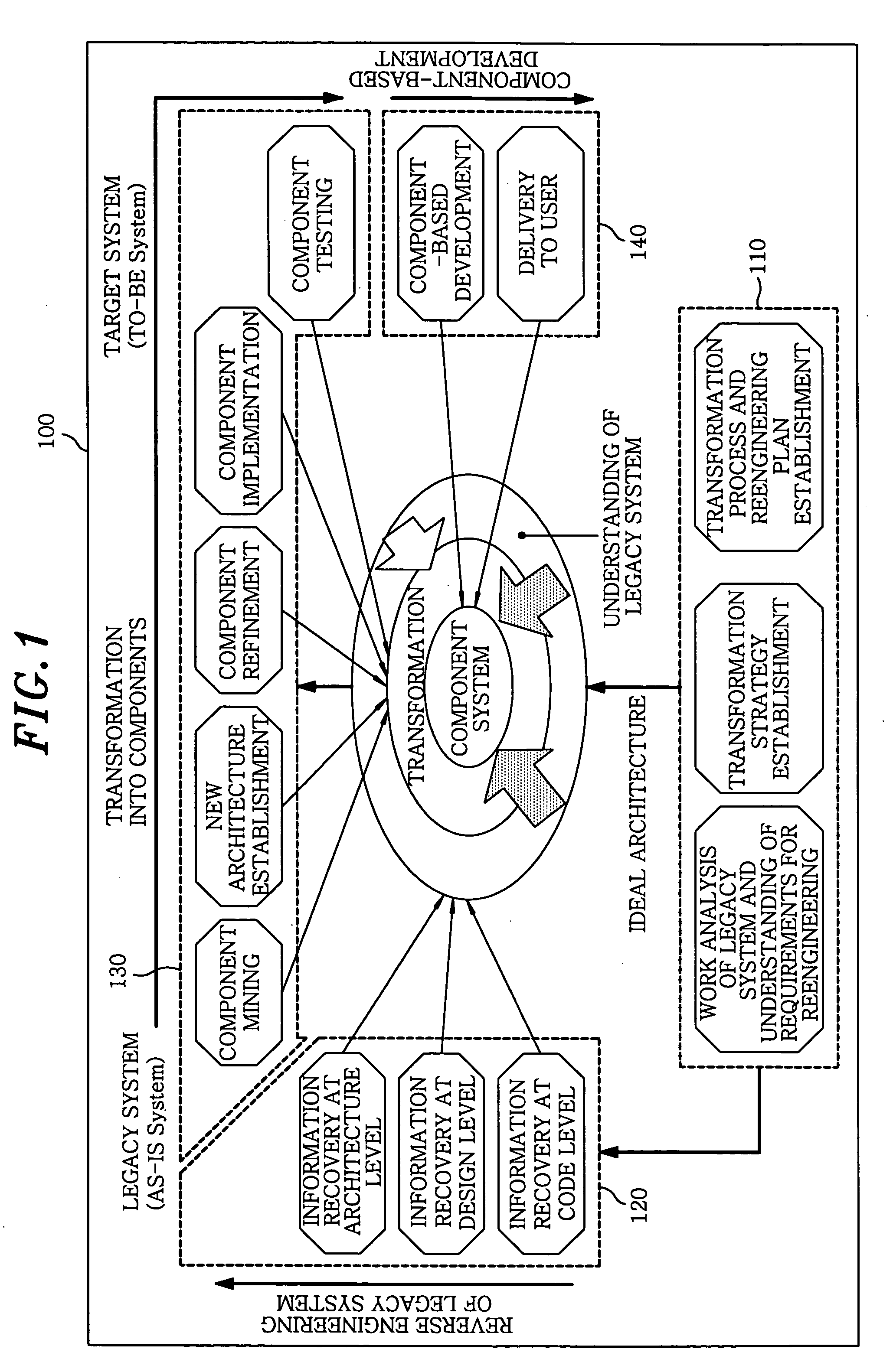Componentization method for reengineering legacy system
a legacy system and componentization technology, applied in software maintainance/management, instruments, program control, etc., can solve the problems of many legacy systems that cannot accommodate new technologies, expand or change, and are unavoidable to depend on users' subjective judgments at the time, so as to maintain and improve the value of the legacy system, the effect of minimizing the semantic differen
- Summary
- Abstract
- Description
- Claims
- Application Information
AI Technical Summary
Benefits of technology
Problems solved by technology
Method used
Image
Examples
Embodiment Construction
[0020] A preferred embodiment of the present invention will now be described in detail with reference to the accompanying drawings.
[0021]FIG. 1 illustrates a view showing a conceptual model 100 of a Magic and Robust Methodology Integrated-Reengineering (MaRMI-RE), which is an architecture-based componentization methodology for reengineering a legacy system, in accordance with a preferred embodiment of the present invention.
[0022] The MaRMI-RE is a component-based reengineering methodology to transform an “AS-IS model”, which a legacy system has, into a “TO-BE model”, which a target system includes, and is an architecture-based reengineering methodology capable of accommodating temporary change requirements. Further, the MaRMI-RE provides a development process based on an architecture oriented to the component-based development, which is capable of customizing a reengineering process in parallel and selectively, unlike a sequential and synchronized development process as in the cas...
PUM
 Login to View More
Login to View More Abstract
Description
Claims
Application Information
 Login to View More
Login to View More - R&D
- Intellectual Property
- Life Sciences
- Materials
- Tech Scout
- Unparalleled Data Quality
- Higher Quality Content
- 60% Fewer Hallucinations
Browse by: Latest US Patents, China's latest patents, Technical Efficacy Thesaurus, Application Domain, Technology Topic, Popular Technical Reports.
© 2025 PatSnap. All rights reserved.Legal|Privacy policy|Modern Slavery Act Transparency Statement|Sitemap|About US| Contact US: help@patsnap.com



